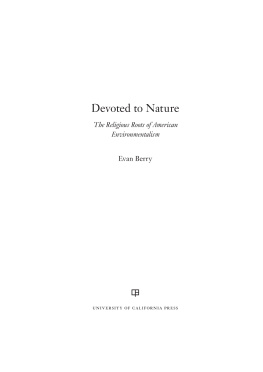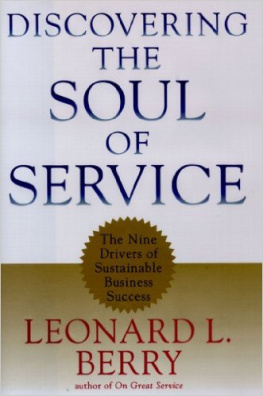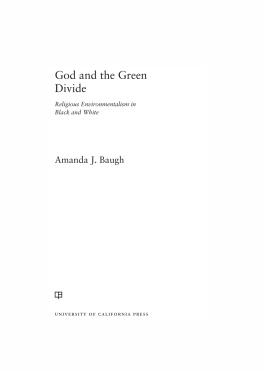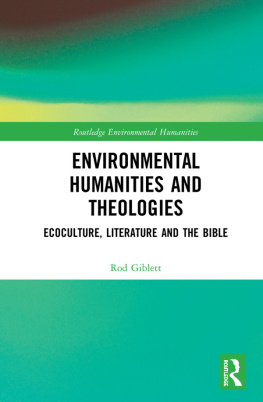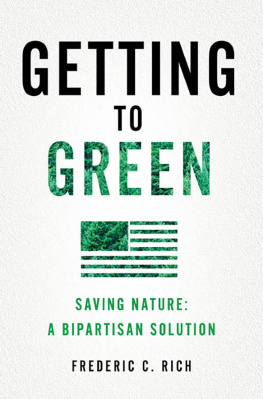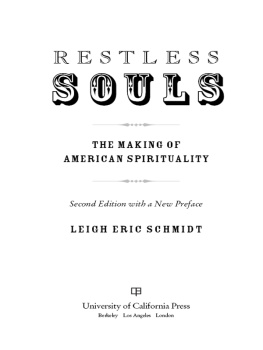ACKNOWLEDGMENTS
This book would not have been possible without the guidance and mentorship of Jim Proctor, who helped shepherd me through graduate school and helped prepare me for the complex challenges of academic life and scholarly work. His ideas, rigor, and support are among the chief reasons why I was able to bring this book to fruition. There are a number of ways to think about and write about the social construction of nature, and I have enjoyed the luxury of experimenting with various approaches against Jims friendly and consistent critical feedback. A mentor who can help you develop your own voice is the very best kind. Wade Clark Roof and Thomas Carlson were also instrumental to the ideas developed in this book: Clarks ideas about how religion operates in American society are evident throughout, and Toms influential lessons about the impact of Christian theology on the specific shape of Western modernity is the foundation on which this work is grounded.
I have also been very fortunate over the past couple of years to share conversations with a number of distinguished scholars across a diversity of academic disciplines that inform this work. Bron Taylor, a guiding light in the study of religion and nature, has provided me with helpful counsel about the theoretical questions that shape the field. Among my colleagues at American University, Paul Wapner and Jeff Reiman have been tremendously helpful interlocutors. Paul consistently pushed me to be particularly mindful of the lessons that can be gleaned from American environmental history. This project would not succeed at much if it did not clearly explain how the strengths and weaknesses of previous environmental movements inform the present moment. Since my first day on campus, Jeff has pushed back against almost every moral and historical argument Ive tried to advance. His intellectual full-court press has helped me distinguish between my rigorous ideas and my wishful ones, and I am much more confident in what I say here because of his help determining what not to say.
A number of close colleagues have helped by critiquing various drafts and talking through insufficiently developed parts of the manuscript. Caleb Elfenbein went far above the ordinary demands of friendship by closely reading the entire manuscript and offering insightful comments both about its overarching themes and about its textual minutiae. In thinking through questions particular to the study of religion and the environment, Luke Johnston and Robin Globus provided useful counsel. Megan Sijapati and Rahuldeep Gill contributed insights and ideas about the writing process and the saliency of the arguments presented here for scholars working outside the narrow area of religion and the environment.
More recently, Whitney Bauman, Kevin OBrien, and one anonymous reviewer proffered incredibly insightful reviews. The clarity and framing of my central claimthat modern American environmental thought is deeply shaped by its relationship with Christian theological traditionis clearer and more forceful because of their crisp comments. I have been writing and rewriting this book over a number of years and have been able to regularly rely on excellent research assistants. In particular, Shannon Williams, Marissa Escajeda, and Lauren Zahn have been instrumental in helping organize my notes, identify archival materials, and tighten bibliographic references. I would like to thank my editors at the University of California Press: Reed Malcolm for his interest in this project and Eric Schmitt for his steady hand in guiding the manuscript to completion. Joe Abbotts discerning eye significantly improved this books rigor and precision. The staff at the Burchfield Penny Art Center are also to be commended for their collaboration in arranging the compelling image on the cover. The work of Charles Burchfield is insufficiently appreciated and resonates closely with a devotion to nature.
Most important, I want to express my gratitude to my family. Their support, patience, and encouragement are the reasons why my intellectual curiosities mean anything in the first place. Gina, my wonderful wife, has been my biggest champion, despite having to hear the same ideas repeated ad nauseam. Her groundedness and eye for the genuine have kept my tendencies to theorize in check and are the real reasons why I am satisfied with what this text accomplishes.
Introduction
Whither Religion?
The forms and creeds of religion change, but the sentiment of religionthe wonder and reverence and love we feel in the presence of the inscrutable universepersists. Indeed, these seem to be renewing their life today in this growing love for all natural objects and in this increasing tenderness towards all forms of life. If we do not go to church as much as did our fathers, we go to the woods much more, and are much more inclined to make a temple of them than they were.
John Burroughs, The Gospel of Nature
We hear different stories about environmentalism. In contemporary political debates in the United States it is not uncommon for environmentalisms public detractors to insinuate that it is eerily close to a religious belief system or to call Al Gore a false prophet of a secular carbon cult. as hell that it is not? If we accept these as the two basic possibilities, then our appreciation of environmentalisms social origins is restricted to two dissatisfying hypotheses: either environmentalism is a fake religion, whose pious followers are unwitting idolaters, or it is unequivocally secular, with little resemblance to the claims made by its ideological opponents. How did this confused bifurcation come about?
This book argues that these positions are both misunderstandings, though for reasons that might frustrate conventional modes of cultural and political interpretation. American environmentalism is related to religion, not out of serendipitous resemblance but by way of historically demonstrable genealogical affinity with Christian theological tradition.

